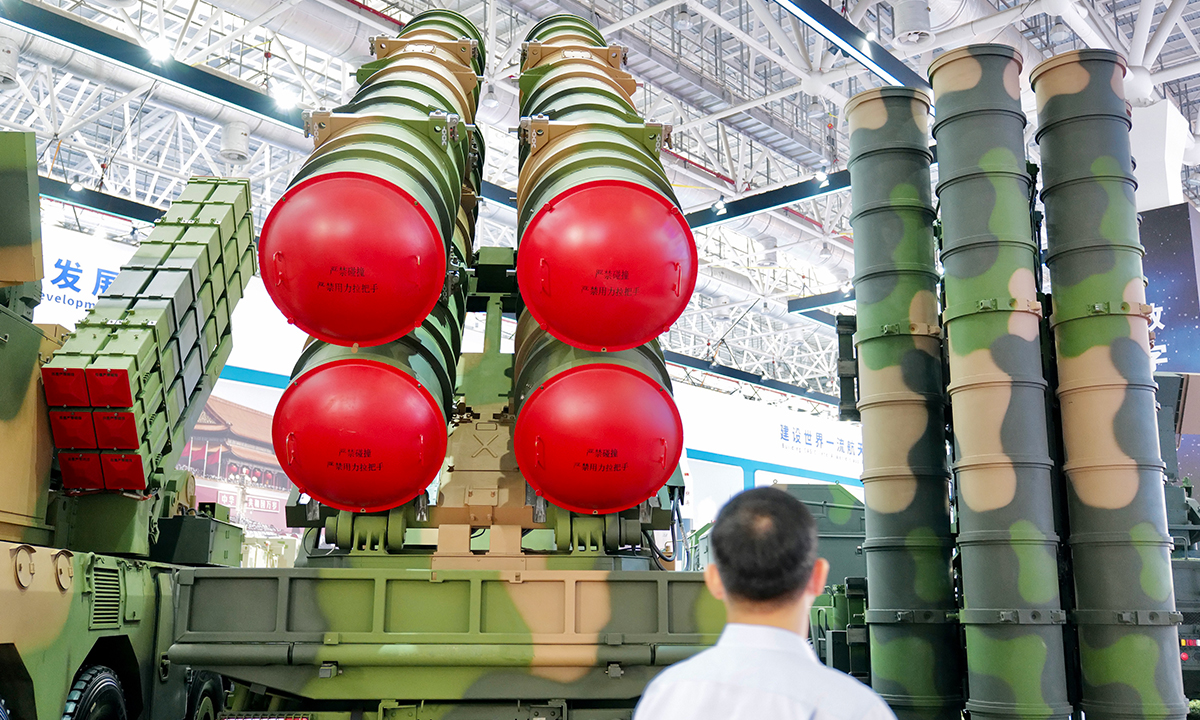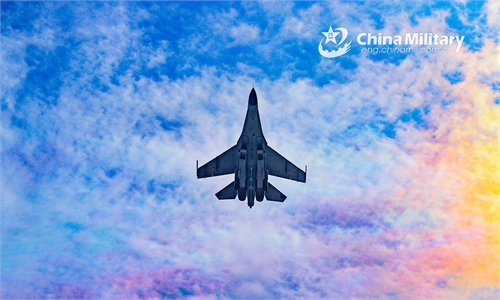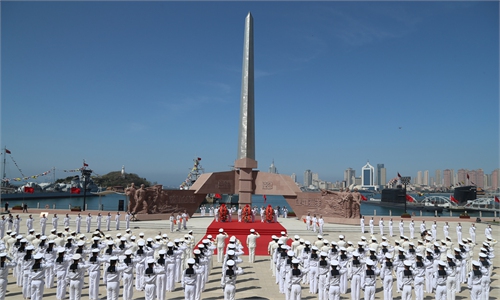Serbia displays 'powerful, affordable' Chinese air defense missiles for the 1st time, 'not meant as a threat but rightful natl defense devt'

Independently developed by China, the FK-3 air defense missile system is on display at the 13th China International Aviation & Aerospace Exhibition in Zhuhai, South China's Guangdong Province on September 29, 2021. Photo: VCG
Serbia displayed its latest addition to its arsenal, the Chinese-made FK-3 air defense missile system, to the general public for the first time on Saturday, after concentrated sorties of Y-20 large transport aircraft from the Chinese Air Force delivered the weapon to the European country in April.
Consisting of, not only missiles and launchers, but also radars and command vehicles, the Chinese air defense system is powerful but affordable, Chinese experts said on Sunday, noting that Western countries should refrain from making inflammatory statements against Serbia's rightful national defense development and its cooperation with China.
Serbia, on Saturday, put the FK-3, the export version of China's HQ-22 air defense missile system, on public display during military exercises at the Batajnica Air Base near Belgrade on Saturday, the Associated Press reported.
Serbian President Aleksandar Vucic said at the display that the Chinese missiles, as well as other recently delivered consignments of military hardware, are not meant as a threat to anyone and only represent a "powerful deterrent" against potential attackers, the Associated Press also reported.
A large number of Y-20 cargo planes from the Chinese Air Force were spotted during their flights from China to Serbia in April during their missions to deliver the FK-3s, as the mission was described by Chinese military experts as the largest overseas operation by the Chinese domestically developed large transport plane yet.
Photos and videos released by Serbia's Defense Ministry and the media on Saturday show that the FK-3s delivered to Serbia include a number of road-mobile missile launchers, different types of corresponding radars, and command vehicles.
The sheer amount of equipment is probably why so many Y-20 aircraft were deployed for the delivery mission, observers said.
Details of the FK-3s on display, including the launchers and the radars, show the technical excellence of this type of weapon while also being very affordable, analysts said.
Instead of using a vertical launching system, the FK-3 still uses angled launching ramps. While vertical launching gives missiles more flexibility, it comes at the cost of range because the missiles would need to adjust its direction using its own fuel. With the adjustable launching ramps, the launcher can help with the direction, giving the missiles a longer range, a Chinese air defense missile expert told the Global Times on Sunday, requesting anonymity.
The structure of launching ramps is also simpler and lighter than a vertical launching system, making the system more affordable, the expert said.
Being the world's only air defense missile to use a dual mode guidance system that combines the command plus semi-active radar homing composite guidance system and the whole-course command guidance system, the FK-3 is very accurate at both long and short ranges, and is difficult to interfere with, the expert said. The missile can cover targets including aircraft and missiles from five to 100 kilometers away at altitudes of 50 meters to 27 kilometers, he said, citing data provided by the FK-3's makers at previous defense exhibitions.
The Chinese missile is comparable to the US' Patriot missile, analysts said.
The Associated Press said Serbia's display of the Chinese missile raised "concerns in the West and among some of Serbia's neighbors that an arms buildup in the Balkans could threaten fragile peace in the region," and "Serbia is the first operator of the Chinese missiles in Europe."
Some Western countries have begun a smear campaign against Serbia prompted by fears of a potential deployment of an air defense system of Chinese origin in Europe, as they might think that the FK-3's large phased array radar system can spot all NATO aircraft activities near Serbia, the anonymous expert said.
But it is Serbia's right to strengthen its national defense and safeguard itself with a weapon that is defensive in nature like the air defense missile, analysts said.
On March 24, 1999, NATO started a 78-day bombing campaign against Yugoslavia, causing thousands of casualties including three Chinese citizens, and displacing hundreds of thousands. Twenty-three years on, the US-driven NATO has not abetted its expansionist activities or curbed its aggression, fanning the flames of the Ukraine crisis while slandering China with baseless accusations.




